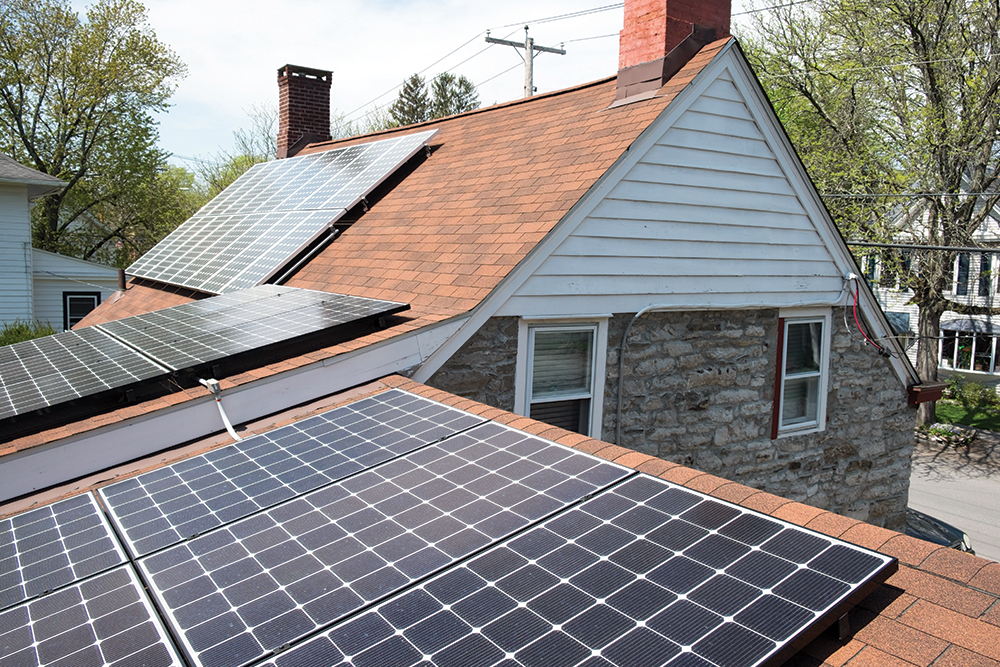The Renewably Powered House: Tips for Upgrading Your Home
By Hugo Jule | Photo: Roy Gumpel | Spring 2019 | Clean Power Guide
Hugo Jule is an energy geek who owns a modest home near Woodstock. Even with a career in solar installation, electric cars, and energy efficiency, he did his homework to make his own property as close as possible to 100 percent renewably powered. In his own words, Hugo explains how he has upgraded his shelter.
“I’ve installed a 2.5Kw solar electric system, had the attic and rim joist air-sealed and insulated, installed an air-source heat pump water heater and a mini-split air-source heat pump for heating and cooling. I’m also replacing all our light bulbs with LEDs.
“I took the time to research the different technologies and find the products that I felt would work well for my situation. For solar, I designed and installed a system I bought used. For heat pump water heater, I installed it myself and used the store’s zero percent financing for six months to buy it. Sears was the store at that time. The air sealing and insulation was done by Energy Conservation Specialists, Home Performance contractors in NYSERDA’s program. The mini-split was done by RYCOR, a HVAC contractor that provided the Mitsubishi financing through Synchrony Bank. We got rebates for the heat pump water heater (now $750 from Central Hudson), the Assisted Home Performance rebates ($4,000) and similar discounts for the mini-splits.
“The solar production has reduced my total electric consumption by about 70 percent from before I had the system. The fuel oil consumption has been reduced too. And the change we can feel the most is comfort during the hot and humid summer months because the mini-split has a very effective dry mode, which helps remove the moisture in our living room.
“Most fun for me has been experimenting with technologies, understanding how to choose and install them, being able to tell that story. Whatever you know, take the time to research the technologies and rebates but don’t dwell on it too long. Take action today: Change those bulbs, call a contractor or two, talk to the utility and the community energy educators hired by the state to assist you! You can do it.”
